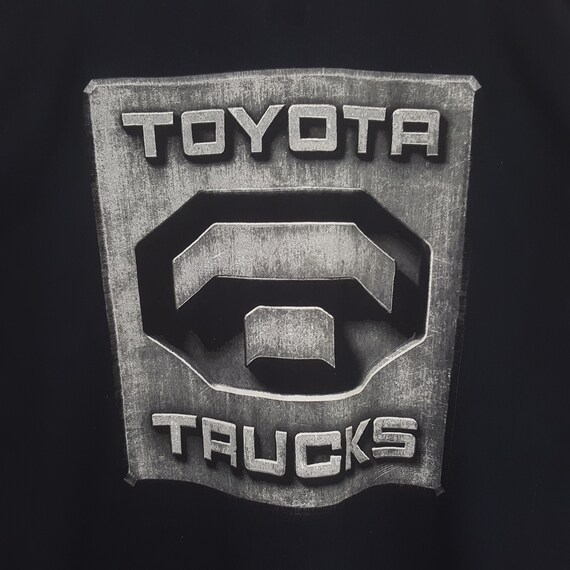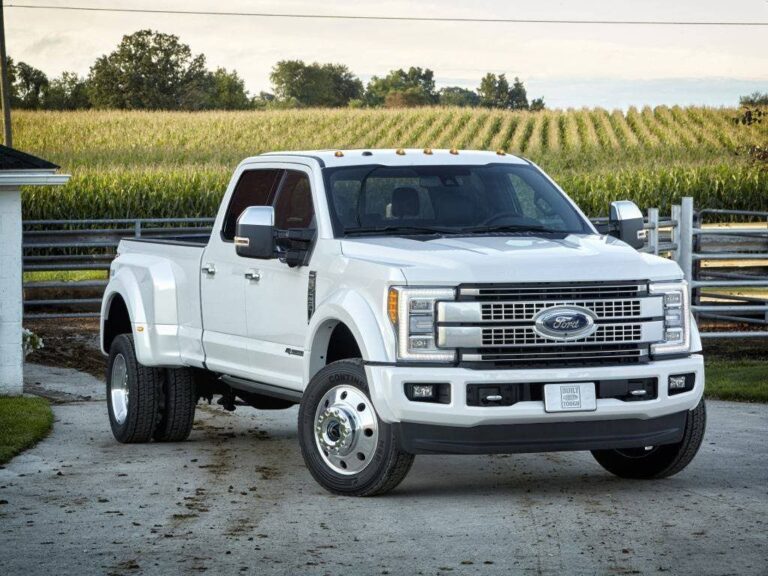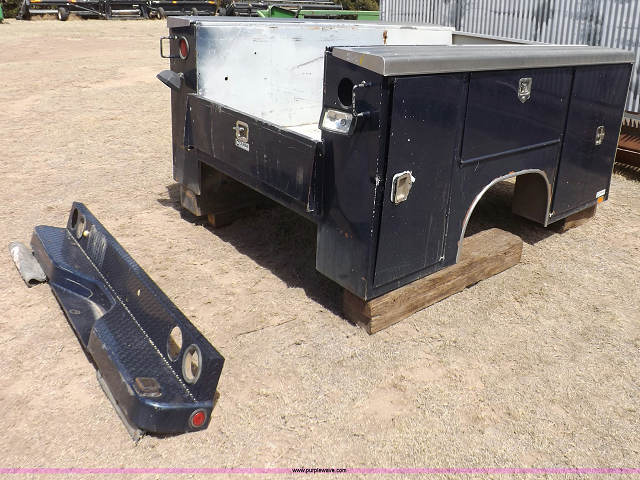Will A 2011 Chevrolet Canopy Fit A 2017 Chevrolet: A Comprehensive Compatibility Guide
Will A 2011 Chevrolet Canopy Fit A 2017 Chevrolet: A Comprehensive Compatibility Guide cars.truckstrend.com
The allure of reusing existing accessories, especially something as substantial as a truck canopy, is undeniable. It promises significant cost savings and the convenience of not having to shop for a new one. For Chevrolet truck owners, a common question arises: "Will a canopy from my 2011 Chevrolet truck fit my newer 2017 Chevrolet model?" While the idea is appealing, the reality is often more complex than a simple yes or no. This comprehensive guide will delve into the critical factors determining canopy compatibility between these two model years, offering insights, practical advice, and a clear understanding of what you can expect.
Understanding Truck Bed Generations: The Core of Compatibility
Will A 2011 Chevrolet Canopy Fit A 2017 Chevrolet: A Comprehensive Compatibility Guide
The fundamental issue in fitting a 2011 Chevrolet canopy onto a 2017 Chevrolet truck lies in the significant generational redesigns that occurred within Chevrolet’s truck lineup.
1. The 2011 Chevrolet Trucks (GMT900 Platform):
For full-size trucks, the 2011 Chevrolet Silverado (and its GMC Sierra counterpart) belonged to the GMT900 platform, which ran from the 2007 to 2013 model years. These trucks featured a distinct body style, cab design, and, crucially, specific truck bed dimensions and contours. The bed rails had a particular width and profile, and the overall bed depth and tailgate design were characteristic of this generation. Canopies manufactured for these trucks were precisely molded to these specifications, ensuring a snug, weatherproof fit and aesthetic integration.
2. The 2017 Chevrolet Trucks (K2XX Platform):
In contrast, the 2017 Chevrolet Silverado (and Sierra) represented the K2XX platform, introduced for the 2014 model year. This was a complete redesign from the ground up, bringing significant changes to the truck’s exterior styling, interior, and mechanicals. Critically, the truck beds also underwent a substantial transformation. The K2XX beds are generally deeper, feature different bed rail cap designs (often wider and with different contours to accommodate features like integrated tie-downs or LED lighting), and have revised tailgate shapes and opening mechanisms.
What about Chevrolet Colorado?
It’s also important to consider the Chevrolet Colorado (mid-size truck). The 2011 Colorado was part of the first generation (2004-2012), while the 2017 Colorado was part of the second generation (2015-present). Both generations have vastly different dimensions and body lines, making cross-compatibility equally unlikely.
Key Takeaway: The shift from the GMT900 to the K2XX platform (for full-size trucks) and the generational change for the Colorado means that the fundamental dimensions, angles, and mounting points of the truck beds are different. This makes a direct, seamless fit between a 2011 canopy and a 2017 truck highly improbable.

Critical Dimensions and Fitment Factors
To understand why a direct swap is so difficult, let’s break down the critical dimensions and fitment factors that must align perfectly for a canopy to function as intended:
- Bed Length (Short, Standard, Long): While both 2011 and 2017 trucks offered various bed lengths (e.g., 5’8", 6’6", 8′), the canopy must match the specific bed length of the target truck exactly. If your 2011 canopy was for a 6’6" bed, and your 2017 truck also has a 6’6" bed, this is a good start, but only one piece of the puzzle.
- Bed Width (Inner and Outer Rail): This is often the biggest hurdle. The width of the truck bed, both between the inner walls and across the outer bed rails, changed significantly between generations. A canopy designed for the narrower or wider bed of one generation will not sit flush on the other.
- Bed Depth/Height: The K2XX beds are notably deeper than the GMT900 beds. This means a 2011 canopy, designed for a shallower bed, might sit too low on a 2017 truck, leaving a substantial gap between the bottom of the canopy’s side skirt and the top of the bed rail. This not only looks awkward but also compromises weather sealing.
- Bed Rail Cap Design: Modern truck beds feature integrated plastic or metal caps that cover the top edge of the bed rails. The shape, width, and contour of these caps varied between the 2011 and 2017 models. Canopies are designed to clamp securely onto these specific rail profiles. If the profiles don’t match, the clamps won’t engage properly, leading to instability, potential damage, and poor sealing.
- Tailgate Area and Rear Opening: The rear frame and door of a canopy are designed to seal tightly against the specific contours of the truck’s tailgate. Changes in tailgate width, height, curvature, or the presence of features like integrated steps can prevent the canopy’s rear door from closing or sealing correctly.
- Body Lines and Aesthetics: Beyond functional fit, a canopy is also designed to complement the overall body lines of the truck. The angle of the cab’s rear window, the curvature of the truck’s side panels, and the overall aesthetic flow changed between generations. Even if you could force a 2011 canopy onto a 2017 truck, it would likely look misaligned and out of place.


The Challenge of Adaptation: What Modifications Might Be Needed?
Given the fundamental differences, adapting a 2011 Chevrolet canopy to a 2017 Chevrolet truck is typically not practical or cost-effective.
- Structural Modifications: Widening or narrowing the fiberglass or aluminum frame of a canopy is an extremely complex and expensive undertaking. It requires specialized tools, materials, and expertise, and often compromises the structural integrity and weather resistance of the unit. This is rarely a feasible option.
- Mounting System Adapters: While custom clamps or mounting brackets might be fabricated, they would need to account for significant differences in bed rail profiles. This could lead to a less secure attachment, potential damage to the bed rails, and difficulty in achieving a watertight seal.
- Weather Sealing: Achieving a truly watertight seal is paramount for a canopy. With mismatched bed dimensions and rail profiles, ensuring that water, dust, and debris are kept out becomes a major challenge, often leading to leaks.
- Electrical Rerouting: Canopies typically include a third brake light and often interior lighting. The wiring harnesses and connectors for these features can differ significantly between model years, requiring electrical modifications.
- Paint Matching: If any bodywork or major modifications are attempted, paint matching the canopy to your 2017 truck’s color would be an additional expense and challenge.
In most cases, the effort, cost, and potential compromise in functionality and aesthetics associated with trying to adapt an older canopy outweigh the benefits of buying a new or properly matched used unit.
Practical Advice and Actionable Steps
If you’re still considering the possibility or simply want to be sure, here’s some practical advice:
- Identify Specific Truck Models: Be precise. Is it a Silverado 1500, 2500HD, or a Colorado? Knowing the exact year and model of both the canopy’s original truck and your 2017 truck is the first step.
- Measure, Measure, Measure: Take detailed measurements of both your 2011 canopy and your 2017 truck bed.
- Canopy: Measure inner and outer width at the front, middle, and rear. Measure the length from front to back. Measure the height of the canopy’s side skirt.
- Truck Bed: Measure the inner and outer width of the bed rails at the front, middle, and rear. Measure the length of the bed from the bulkhead to the tailgate. Measure the depth of the bed from the top of the rail to the bed floor.
- Compare these measurements carefully. Any significant discrepancy (more than an inch or two in width or height) is a strong indicator of incompatibility.
- Consult Canopy Manufacturers/Dealers: Reach out to reputable canopy manufacturers (e.g., ARE, Leer, Snugtop) or local truck accessory shops. They often have compatibility charts or databases that can quickly tell you if a cross-fit is possible. They are also experts in bed dimensions across various truck generations.
- Professional Assessment: The most definitive way to know is to take both the canopy and your 2017 truck to a reputable truck accessory shop. Their experienced technicians can physically assess the fit, identify potential issues, and provide an honest appraisal of the feasibility and cost of any necessary modifications.
- Weigh Costs vs. Benefits: Objectively assess whether the potential savings of reusing your old canopy are truly worth the hassle, potential poor fit, compromised functionality (leaks, poor seal), and aesthetic drawbacks.
Cost Considerations: New vs. Used vs. Modification
When deciding on a canopy solution, understanding the financial implications of each option is crucial. Below is a comparative cost and feasibility table to help you make an informed decision:
| Option | Description | Estimated Cost Range | Pros | Cons |
|---|---|---|---|---|
| New Canopy (2017 Specific) | Brand new canopy, custom-built for the 2017 Chevrolet truck model and bed length. | $2,000 – $4,000+ | Perfect fit, aesthetics, full warranty, modern features, no leaks, optimal security. | Highest initial cost. |
| Used Canopy (2017 Specific) | A pre-owned canopy specifically designed for a 2017 Chevrolet truck of the same model and bed length. | $500 – $1,500 | Significant cost savings over new, potentially good fit if matched correctly. | Finding the exact match can be difficult, condition varies, no warranty, may require minor repairs. |
| Attempting to Fit 2011 Canopy | Labor for assessment, custom parts (clamps, seals), potential bodywork, paint, electrical modifications. | $300 – $1,000+ (highly variable) | Reusing an existing asset, potentially saving on the cost of a new canopy (if successful). | Unpredictable outcome, potential for leaks/poor aesthetics, no guarantee of success, high labor cost. |
| Tonneau Cover (Alternative) | A roll-up, tri-fold, or hard-folding bed cover that provides weather protection and security for the bed. | $200 – $1,500 | Much cheaper than a canopy, versatile (easy to remove/fold), good for light duty protection. | Less cargo volume, not as secure as a hard canopy, cannot stand up inside. |
| No Canopy | Using the truck bed open without any cover. | $0 | No additional cost, full open-bed utility. | No weather protection, no security for cargo, items can blow out. |
Frequently Asked Questions (FAQ)
Q1: Are all Chevrolet truck beds the same size?
A1: No, absolutely not. Chevrolet trucks come in various models (Silverado 1500, 2500HD, Colorado) and generations. Each model and generation has distinct bed dimensions (length, width, depth, rail profile) that vary significantly.
Q2: What’s the biggest difference between a 2011 and 2017 Silverado bed?
A2: For full-size Silverado trucks, the biggest difference is the platform change from GMT900 (2007-2013) to K2XX (2014-2019). The K2XX beds are generally deeper, have different bed rail cap designs, and revised tailgate contours, making direct canopy interchange impossible.
Q3: Can I modify my truck bed to fit an older canopy?
A3: Modifying the truck bed itself is highly impractical, expensive, and could compromise the structural integrity and warranty of your vehicle. It’s not a recommended approach for fitting an older canopy.
Q4: What are the risks of using a non-fitting canopy?
A4: Risks include poor weather sealing (leaks, dust intrusion), insecure mounting (canopy could shift or detach), compromised aesthetics, difficulty opening/closing the rear door, and potential damage to both the canopy and your truck’s bed rails.
Q5: Where can I find specific bed dimensions for my truck?
A5: You can usually find detailed bed dimensions in your truck’s owner’s manual, on Chevrolet’s official website for your specific model year, or by searching online forums and truck accessory retailer websites. Measuring your actual truck bed is always the most accurate method.
Q6: Are there any universal canopies that would fit?
A6: Truly "universal" canopies are rare and usually consist of basic, lightweight frames with fabric covers, offering minimal security or weather protection. High-quality, fiberglass or aluminum canopies are always model-specific to ensure a precise, weatherproof, and secure fit.
Conclusion
The dream of simply transferring a 2011 Chevrolet canopy to a 2017 Chevrolet truck is, unfortunately, largely incompatible with the reality of automotive design. Due to significant generational changes in truck bed dimensions, body lines, and mounting systems, a direct, seamless fit is highly improbable, especially for full-size Silverado/Sierra models.
While the idea of saving money is appealing, the challenges, potential costs of modification, and the likely compromise in functionality, aesthetics, and weather sealing typically make it an unfeasible endeavor. For a secure, weatherproof, and aesthetically pleasing solution, investing in a new canopy specifically designed for your 2017 Chevrolet truck, or finding a properly matched used one, will almost always prove to be the better, more cost-effective long-term decision. Prioritize functionality, safety, and the preservation of your truck’s integrity over attempting to force a fit that was never intended.






